News
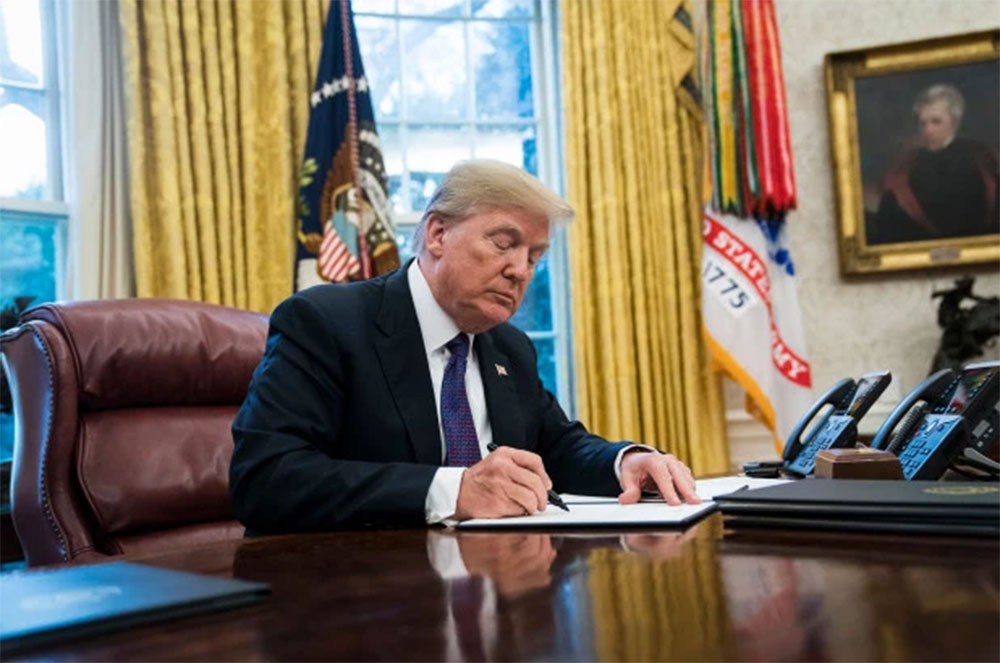
Trump to sign massive defence bill giving more money to Sri Lanka
US President Donald Trump is set to sign a more than 700 billion US dollar defence bill for the fiscal year 2019 on Monday, giving more money to countries like Sri Lanka.
The bill gives big increases to the US military to counter the White House’s calls for greater competition, specifically with China and Russia, CGTN reported.
A week after approval from the House of Representatives, the US Senate passed the 716 billion US dollar National Defense Authorization Act (NDAA) on Aug. 2, backing Trump’s call for a bigger and stronger military.
The defence act is aimed to provide more money to forge closer defence relationships with other nations like India and Sri Lanka. This year saw the first visit of a US aircraft carrier to Vietnam since the end of the Vietnam War.
Timothy Heath, senior international defence researcher from Rand Corporation said the US is increasing its already overwhelming naval and air superiority all over the Indo-Pacific region.
“It’s not simply authorizing more planes and ships to be built, which it does, but it also directs reporting requirements on issues on influence operations and espionage,” he said.
(Colombo Gazette)
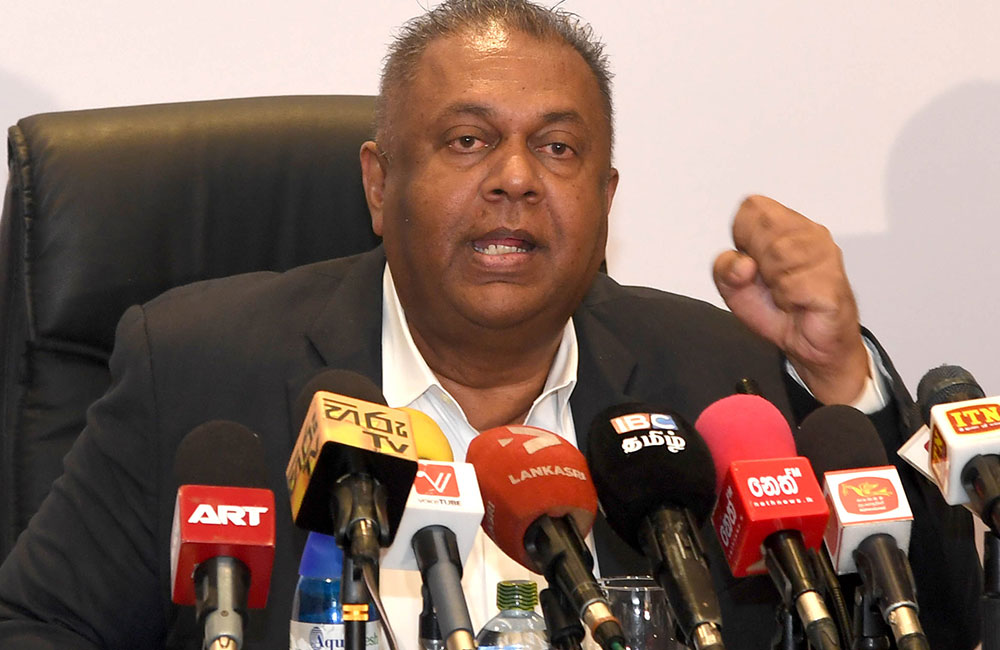
Hidden political hand behind sudden strikes : Minister Mangala Samaraweera
Finance and Media Minister Mangala Samaraweera struck a defiant tone yesterday saying that there was a political hand in the sudden strike by railway workers adding that this government would not be bullied into adhoc salary revisions.
“Next Tuesday, Cabinet is to approve a proposal for the setting up of a commission which would look into the salary anomalies of the state sector while their report will be the basis upon which any revisions would be made,” he said. “We cannot increase the salaries of only railway engine drivers as it would cause a huge anomaly within the other sectors of the government service.”
The Minister refused to hold talks with the strikers until they gave up the protest adding that the sudden strike was uncalled for and unfair.
He alleged that there was a hidden political hand at work and that the government would do everything at its disposal to alleviate the difficulties faced by commuters and students sitting for their Advanced Level examinations. “During the last few days alone, we have had the unstinted support of the Army who ran additional buses, police and bus operators who offered their services at no cost,” he said.
“We have allowed bus operators without permits to operate and invite them to register with the National Transport Commission for a special service until the situation returns to normalcy,” Minister Samaraweera said.
The Minister added that once bus operators (even those without permits) have registered with the NTC, they would be given the opportunity to operate in the mornings and evenings and would be compensated for by the Treasury. Commuters are permitted to use their season tickets when travelling on SLTB buses. “I urge the strikes to stop their protest and come for a discussion with the authorities. Their issues can only be resolved through discussions and we are prepared to talk if they are willing to stop their strike.” he said.
The Minister elaborating further added that the existing basic salary of an engine driver was Rs.44,600. However, their take home salary inclusive of allowances amount to nearly Rs.200 000.
However, they have been agitating for an increase in their basic salary up to Rs.56,205. Minister Samaraweera added that an increase of the basic salary scale would cause a huge anomaly in the salaries of other state sector employees across the board. He assured that the issue would be sorted within the next two to three months.
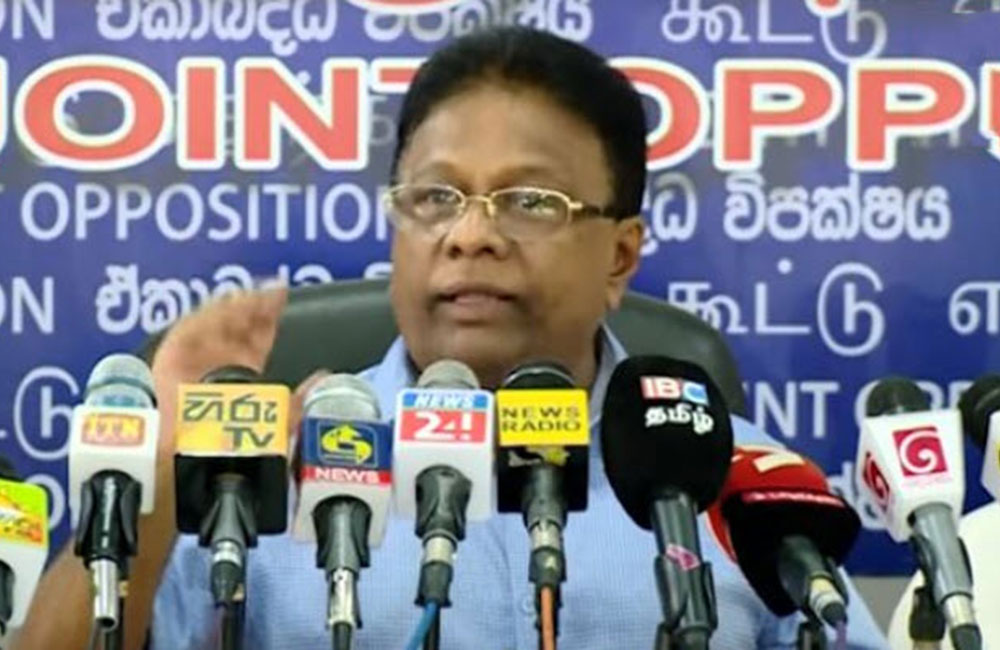
JO MP’s to quit UPFA?
Joint Opposition (JO) parliamentarians may quit the United People’s Freedom Alliance (UPFA) in the coming week launching yet another bid to secure the leadership of the Opposition. Speaking to the Sunday Observer, JO frontliner Dullas Alahapperuma said if the Joint Opposition party leaders who are scheduled to meet on Tuesday (14) unanimously endorse the decision to quit the UPFA steps will be taken to give effect to that decision with immediate effect. Accordingly 70 MPs in the Joint Opposition (JO) could breakaway to form an independent group.
MP Alahapperuma said his personal point of view is that the JO should quit the UPFA and act as an independent group in Parliament which would eventually urge the Speaker to offer the Leader of the Opposition post to the JO. However, this proposal will be submitted to the Tuesday’s JO Party Leader’s meeting.
The JO has already complained to the Inter Parliamentary Union (IPU) and the Commonwealth Parliamentary Association (CPA) regarding the issue of the Opposition Leader. “Nearly 50 percent of the people have voted for us and we cannot let their mandate go unheeded in Parliament,” he said.
The JO heavyweight said the reply from the Speaker was expected. “We only wanted to show how unjust the incumbent Speaker is” he said adding that if their positions as UPFA MPs in Parliament poses an obstacle they would not hesitate to take a decision regarding it.
Making a special announcement in Parliament on Friday (August 10), Speaker Karu Jayasuriya said that his final decision is that the constitutional and Parliamentary tradition did not warrant him to effect any change in the post of the Opposition Leader. However, he assured that he would allocate more time and provide more space in Parliamentary Committees for the JO in keeping with the number of MPs in its ranks. The Speaker also made it clear that the Opposition Leader post should be held by a person who is not from a political party representing the Government.
He pointed out the Parliamentary Resolution adopted on September 03, 2015 clearly stated that the UNP and UPFA were partners of the present National Government.
Source : Sunday Observer
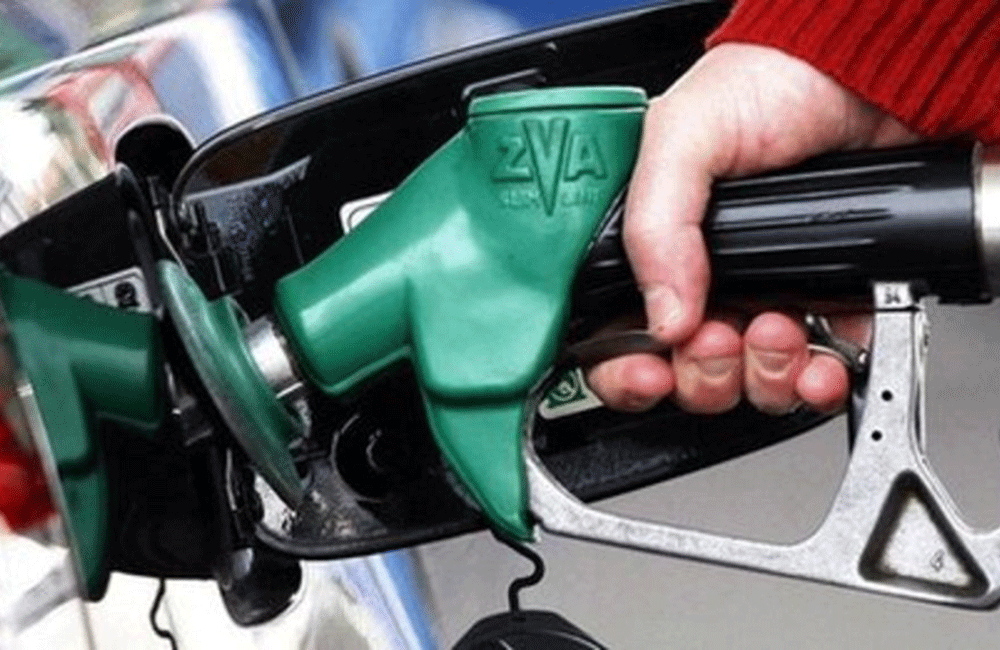
Lanka IOC fuel prices to increase from midnight today
Lanka Indian Oil Company says that fuel prices will be increased with effect from midnight today (11), in line with the revision of CPC prices.
The Ministry of Finance had announced the increase in prices of two types of fuel by the Ceylon Petroleum Corporation (CPC) with effect from midnight yesterday. The price of a litre of 95 Octane Petrol was increased by Rs 2 while the price of Super Diesel was increased by Rs 1 per litre.
Lanka IOC said it would also increase the price of 95 Octane Petrol by Rs 2 and Euro 4 standard Super Diesel by Rs 1. Accordingly the new price of a litre of 95 Octane Petrol will be Rs 160 while the new price of Super Diesel is Rs 130. However, the prices of 92 Octane Petrol and Auto Diesel will remain unchanged, Lanka OIC said.
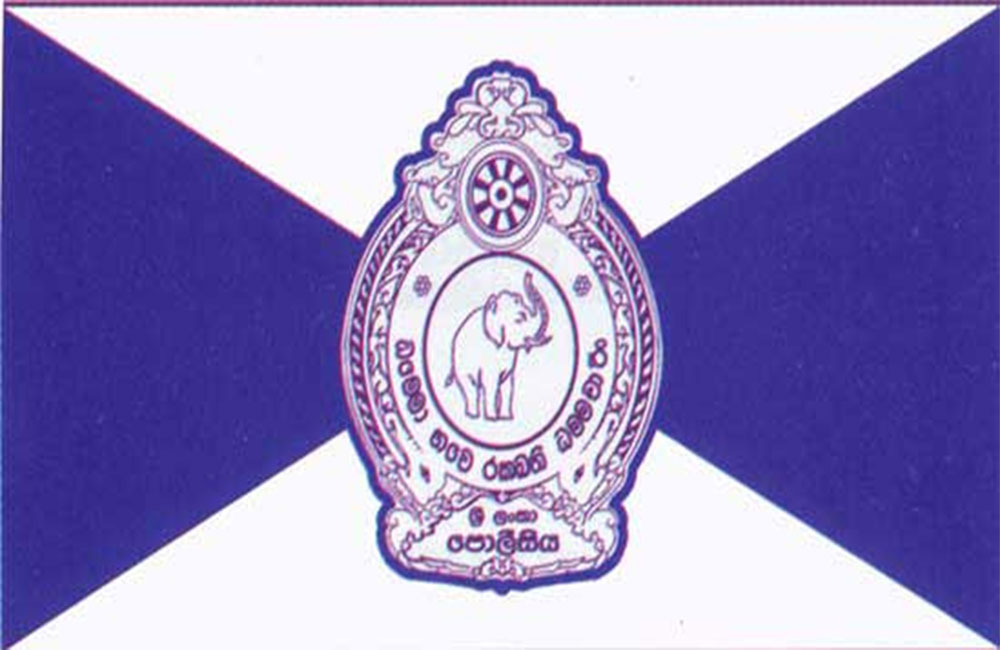
New hotline to complain about ‘Ava’
A new hotline has been introduced by the Police for public complaints regarding organized groups in the North such as the ‘Ava’ group which has been causing issues in the district in recent times.
Accordingly, the public can call on 076 60 93 030 to provide any information or complain regarding their activities. Any such calls received will be investigated under the guidance of Senior DIG of Jaffna, Roshan Fernando. Fernando has assured that privacy of those complaining will be assured.
The Police are currently focusing specifically on the Kopai and Chunnakam areas.
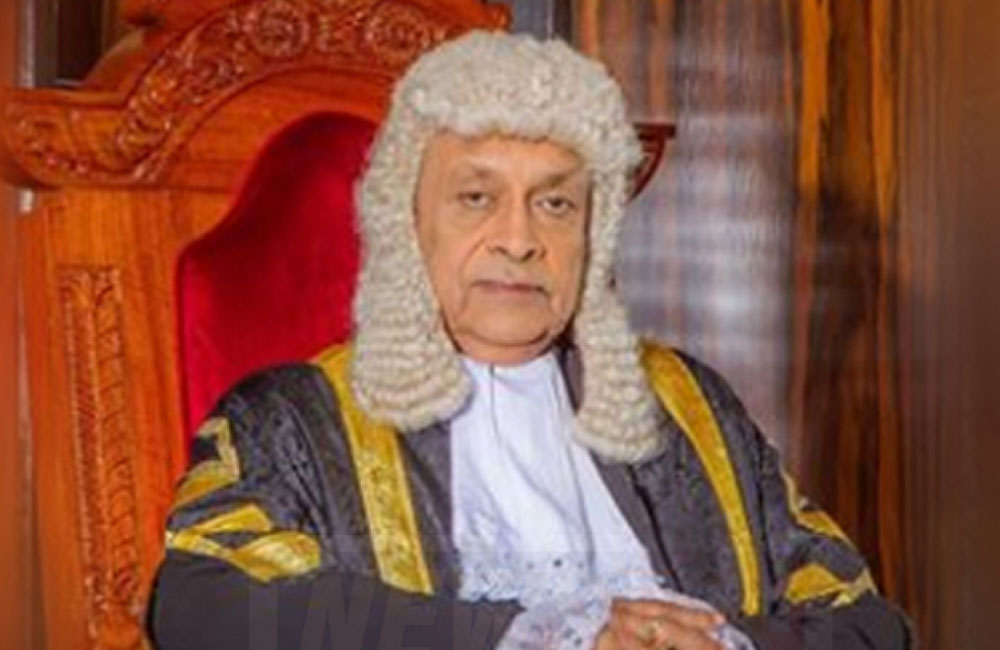
No change in the Opposition Leader post : Speaker
Speaker Karu Jayasuriya today announced that there will be no change in the post of the Opposition Leader. Making a special statement in parliament, the Speaker said in accordance with the continuing long-established parliamentary tradition, the leader of the party which is not a party of the government and holds a majority of members in opposition, has been accepted as the Leader of Opposition.
Accordingly, in the current 8th parliament of Sri Lanka, the leader of the Illankai Tamil Arasu Kachchi (ITAK) party, Member of Parliament Rajavarothiam Sampanthan has been accepted as the Opposition Leader of parliament by the Speaker on 03 September 2015.
"As such, I hereby declare that my final decision is as the Speaker of this august assembly, I cannot constitutionally or traditionally make a change in the post of Opposition Leader of Parliament," the Speaker said in his long statement.
A letter signed by eight United People's Freedom Alliance (UPFA) Members of Parliament requesting the Leader of the Opposition in Parliament post to be given to UPFA MP Dinesh Gunawardena was submitted to the Speaker on July 30 claiming that 70 members of parliament represent the UPFA and therefore the Opposition Leader post should be given to a UPFA parliamentarian.
Source : Colombo Page
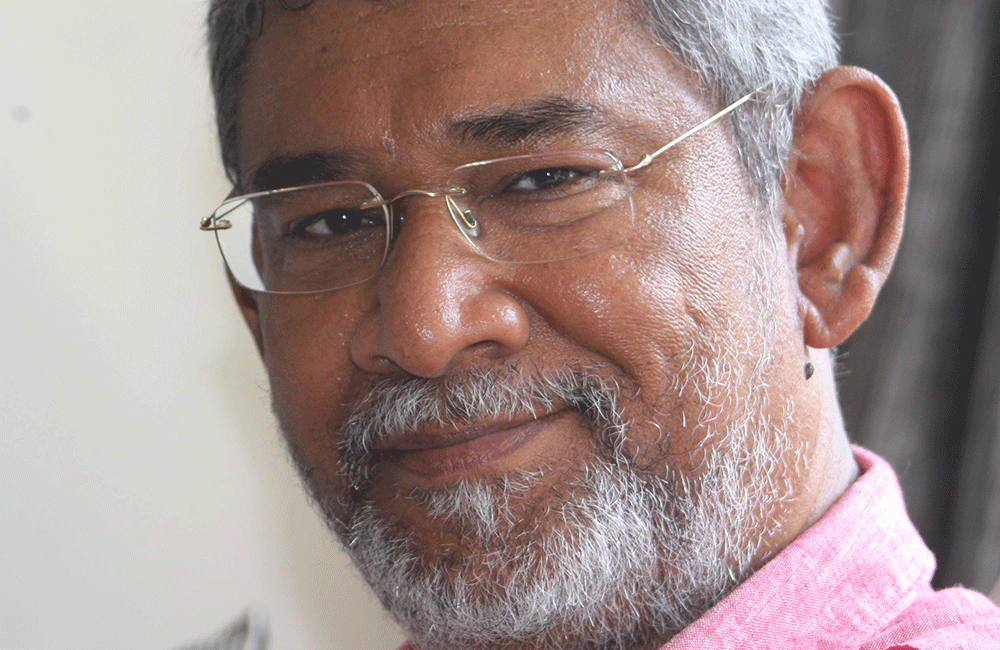
10 new envoys appointed: Dayan to Russia as Austin heads to India
New Sri Lankan Ambassadors and High commissioners have been appointed for 10 countries including India, Pakistan and Russia.
Sri Lanka’s former Permanent Representative to the United Nations in Geneva Dr. Dayan Jayatilleka has been appointed as the new Ambassador to Russia while former Secretary to President Austin Fernando is the new High Commissioner to India.
Following are the new Ambassadors/High Commissioners:
Prof. (Ms) Arusha Cooray – Ambassador to Norway
Dr. Dayan Jayatilleka – Ambassador to Russia
Mr. M.M.Jaffeer – Ambassador to Brazil
Mr. M.K.K.Girihagama – Ambassador to Canada
Mr.C.A.H.M. Wijeratne – Ambassador to Poland
Mr. S.S.Ganegama Arachchi – Ambassador to Sweden
Ms. S.S. Premawardhena - Ambassador to Vietnam
Mr. Anuruddha Kumara Mallimarachchi – High Commissioner to South Africa
Mr. Austin Fernando – High Commissioner to India
Mr. Noordeen Mohamed Shaheid - High Commissioner to Pakistan
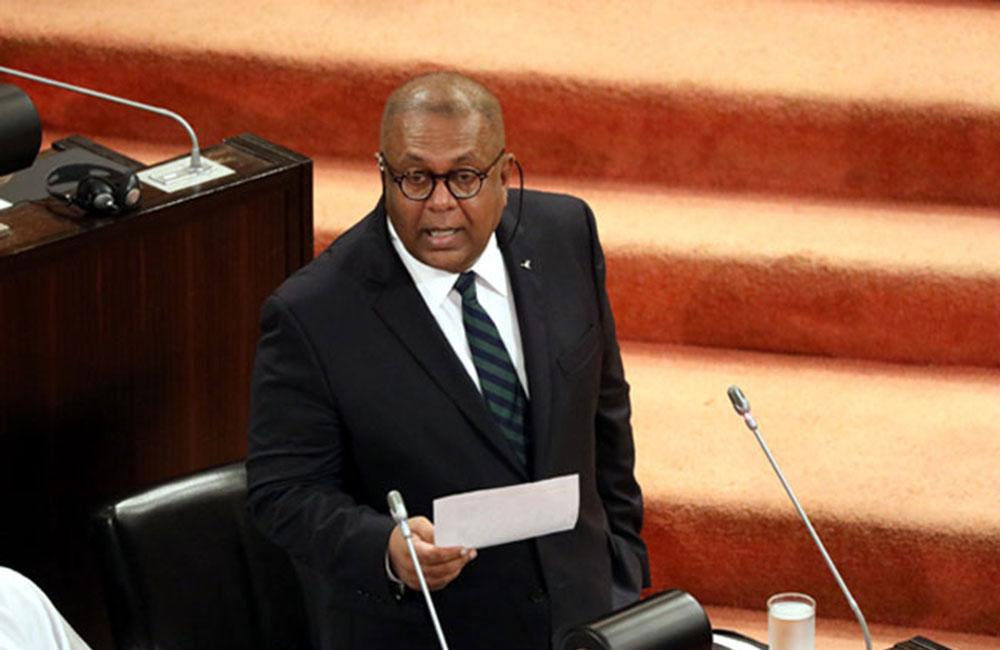
Government's aim is to systematically reduce tax burden on public - Finance Minister
Minister of Finance and Mass Media and Information Mangala Samaraweera said the government's main policy is to systematically reduce the tax burden on the people and therefore a new amended Inland Revenue Act will be presented in the House soon.
Minister Mangala Samaraweera made this disclosure commencing the debate on the Value Added Tax (Amendment) Bill which was passed in Parliament yesterday.
The bill to amend the Value Added Tax Act, No. 14 of 2002 to exempt private hospital channelling services and several other selected items from VAT was presented by the Finance Minister on 17th of July, 2018.
Speaking at the debate, Minister Samaraweera said the Value Added Tax (Amendment) Act was presented considering the people's view to introducing amendments to the VAT on several important sectors.
The amendment will exempt VAT on private medical services, especially channelling services used by people, medical services, medical institutions and healthcare. VAT will be applied only for the room charges for residential treatment in private hospitals.
According to the amendments, infant milk powder, educational books and periodic publications, medical equipment, clinical equipment, child care services and eco-friendly renewable energy equipment have been exempted from the VAT.
He said implementing the budget proposals system of refund of VAT for tourists will be introduced from September at the International Airport at Katunayake.
According to the Minister, the foreigners can claim for VAT refund up to 15 percent for items they purchase in Sri Lanka. This measure is to boost tourism in the country.
The Minister noted that income from tourism has risen to US$ 4 billion. "Minister of Tourism is planning a systematic program to increase the number of tourists visiting our country to 4 million by the year 2020 and through that to increase the earnings up to US$ 7 billion by 2020,� he said.
"Our main goal is to reduce indirect taxes and expand direct taxes. In January last year, there were only 48,850 income tax files with 21 million people living in the country. In this January it was able to open 336,671 tax files. As such, arrangements are being made to expand the direct tax. About 82% of the country's national income is from the VAT paid by the general public and indirect taxes," the Minister explained.
"The main policy of the government is to gradually reduce that burden in the future. Currently, 18 percent of direct taxes are received.
Indirect taxes amount to 82 percent. Our aim is to change this to 60 to 40 in the next two years. For this we implement a formal tax program. We introduced the new Inland Revenue Act. Several amendments to the new Act will be brought to Parliament during this month," Minister Samaraweera said.
"There was some problems for artists and to the savings account of children. We hope to correct these and some others and present the amended Act within August," the Minister further explained.
Explaining the tax imposed on vehicles under 1000 CC, the Minister said, a tax system based on the engine capacity was presented. Through the system it was possible to stop all the smuggling rackets.
In January the price of vehicles under 1000 CC was reduced by Rs. 800,000 allowing the average middle class to buy the first car. However, the last six months turned into a tsunami. From January to May 24,000 vehicles below 1,000 cc were imported. On one side even at midnight there was traffic congestion in Colombo. A more serious problem was we were losing foreign exchange to the point that the dollar would have been 167 rupees if the trend continued. We considered these when we decided to raise the taxes. Still the taxes are Rs. 400,000 lower than the taxes during the former regime," the Finance Minister told parliament.
He expressed confidence that the VAT could be reduced by 2.5 percent by 2020 with the streamlining of tax system in the country.
Source : Colombo Page
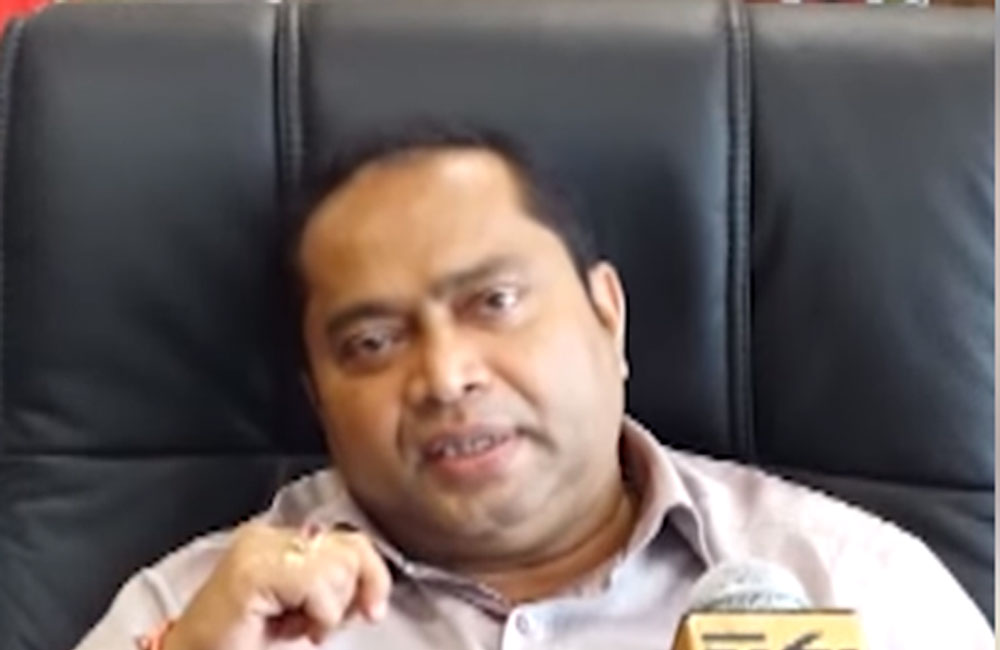
Governor halts import of Belgian chairs for WPC
The Governor of the Western Province Hemakumara Nanayakkara has decided to temporarily halt the importing of 125 chairs for the Western Provincial Council from Belgium, each said to be valued at around Rs 650,000.
JVP provincial councillor Lakshman Nipuna Arachchi revealed that over 100 chairs, each costing Rs 640,000, had been ordered for the chamber of the new Western Provincial Council building in Battaramulla.
He had written a letter to the Governor of the Western Province requesting the latter’s special intervention into this matter. “After the complaint, I have ordered the WPC Chief Secretary to halt the order and commence an investigation into the matter,” Nanayakkara said.
Chief Minister Isura Devapriya came under heavy fire on social media after he was quoted as saying that each chair had cost Rs. 640 000 and not Rs. 650 000 as claimed by the JVP Councillor. According to him the it was the earnings of the council that was used in the purchase and therefore it should not be a problem.
The cabinet had recently approved the purchase of new chairs for the WPC after it was moved to a new building after which it had placed an order to import the necessary seats similar to those used in the parliament from Belgium.
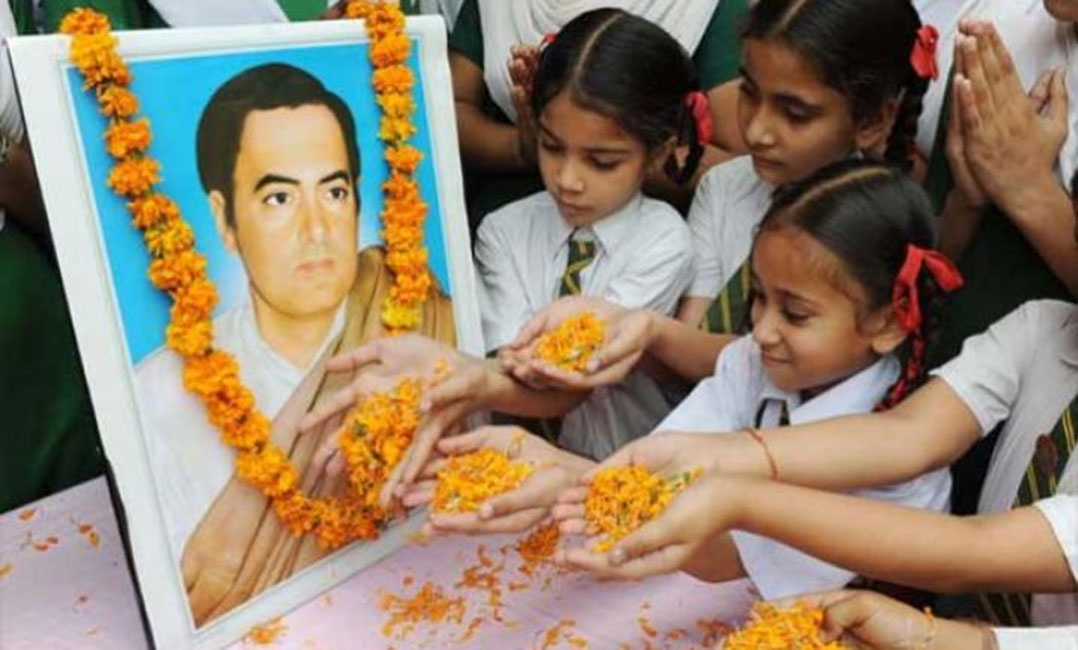
Indian central government rejects Tamil Nadu proposal to set free Rajiv Gandhi LTTE killers
The Indian government today informed the Indian supreme court that convicts of the Rajiv Gandhi assassination case cannot be released and that it rejects the proposal of the Tamil Nadu government requesting for their release.
The solicitors appearing for the government said the release could set a dangerous precedent adding that the prisoners do not deserve to be set free.
Rajiv Gandhi was assassinated on the night of May 21, 1991 at Sriperumbudur in Tamil Nadu by a woman suicide bomber of the LTTE, identified as Dhanu, at a poll rally. Fourteen others, including Dhanu herself, were also killed in the explosion.
Arputhammal, the mother of the AG Perarivalan, one of the life convicts in the Rajiv Gandhi assassination case, urged the Tamil Nadu government for the mercy killing of her son, after President Ram Nath Kovind rejected the state's plea for the release of the convicts.
Kovind rejected the Tamil Nadu government’s request to release the seven prisoners, including Perarivalan, in the Rajiv assassination case. The convicts are V. Sriharan alias Murugan, A.G. Perarivalan, T. Suthendraraja alias Santhan, Jayakumar, Robert Payas, Ravichandran and Nalini.
In its May 1999 order, the top court had upheld the death sentence of four convicts -- A G Perarivalan, Murugan, Santham and Nalini -- in the assassination case.
In April 2000, the Tamil Nadu governor had commuted the death sentence of Nalini on the basis of the state government's recommendation and an appeal by former Congress president and Rajiv Gandhi's widow Sonia Gandhi.
On February 18, 2014, the top court had commuted the death sentence of Perarivalan to life imprisonment, along with that of two other prisoners - Santhan and Murugan - on grounds of a delay of 11 years in deciding their mercy pleas by the Centre.
The apex court had in March this year dismissed a plea by Perarivalan seeking a recall of the May 1999 verdict upholding his conviction. The charge against Perarivalan was that he had purchased two nine volt battery cells meant for detonating the bomb.
Rajiv Gandhi became the youngest prime minister of India at 40, when he assumed office after his mother and former Prime Minister Indira Gandhi was assassinated in 1984.
Source : Indian Media
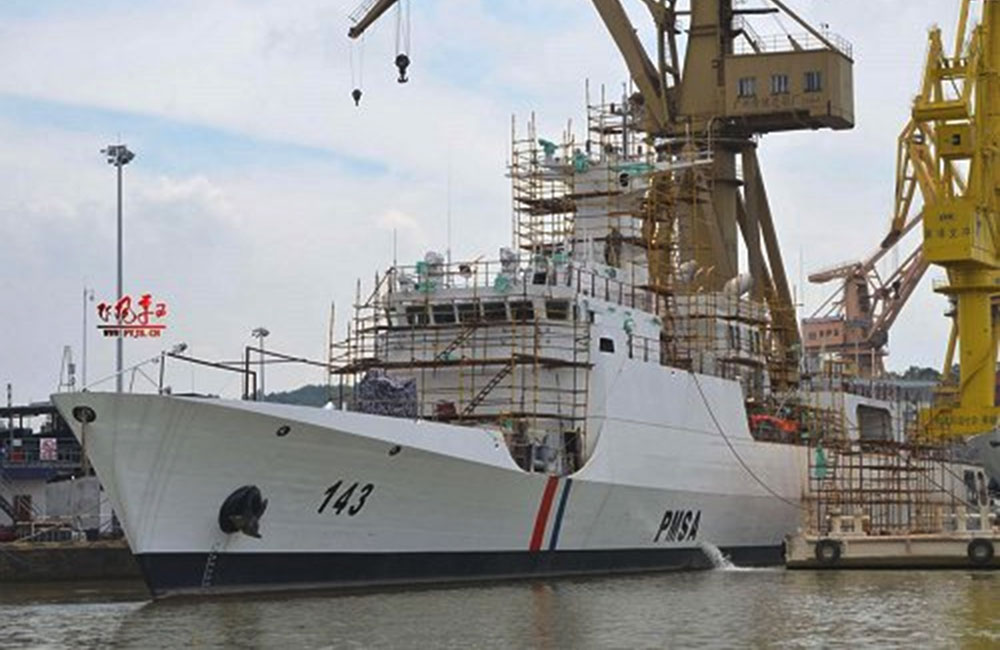
Pakistan Maritime Security Ship "Kashmir" to visit Sri Lanka
Pakistan Maritime Security Ship (PMSS) "Kashmir" is scheduled to arrive at Colombo Port on a four-day goodwill visit from August 13 to 16, 2018, the High Commission of Pakistan in Colombo announced.
Pakistan Naval ships frequently pay port calls to Sri Lanka, as both countries enjoy warm diplomatic and strong military ties. Such interactions also demonstrate both navies' resolve to contribute towards achieving a more secure and conducive maritime environment which is essential for the regional peace, prosperity and harmony, the announcement said.
The PMSS Kashmir, a 94-meter MPV, with a displacement of 1,550 tons, is equipped with state-of-the-art weaponry, communication and navigational equipment. The ship is propelled by two advanced diesel engines to achieve a maximum speed of 26 knots and has an endurance of 3,500 nautical miles.
The brand new ship is capable of undertaking multifarious missions such as surveillance, policing, anti-smuggling and anti-poaching operations, security and law-enforcement patrolling in maritime zones, pollution monitoring and control and search and rescue operations while operating independently or as part of a task force in a multi-threat environment for extended duration at sea due to having that capability of replenishment and shipboard helicopter operations.
During their stay in Colombo, the officers and men of the PMSS Kashmir will take part in various professional activities with Sri Lankan Navy.
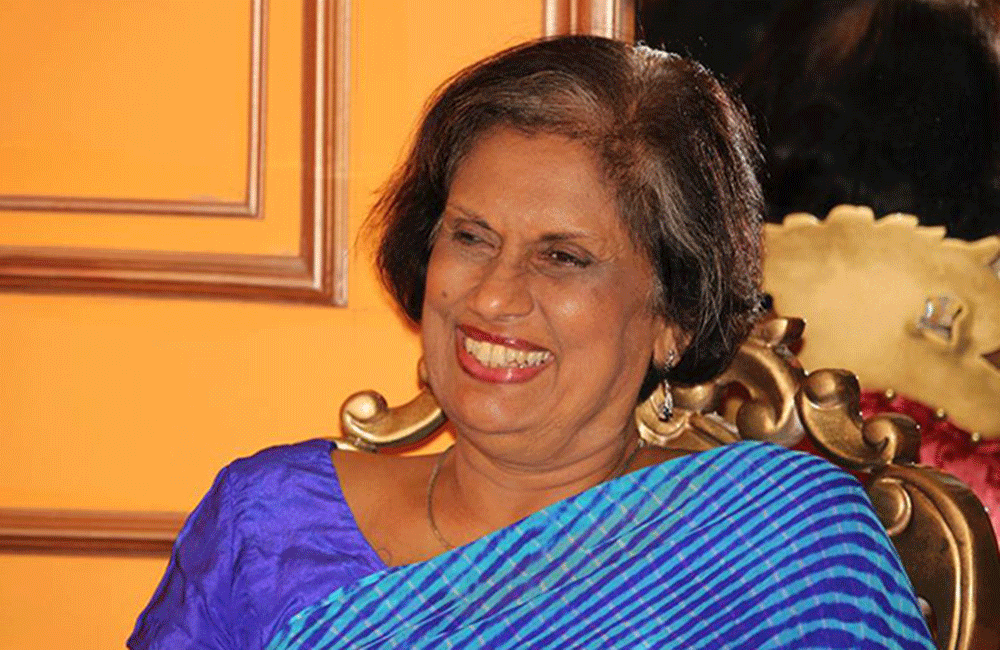
Chandrika removed from SLFP committee?
Former President Chandrika Bandaranaike Kumaratunga is said to have been removed from the Sri Lanka Freedom Party (SLFP). During Former President Mahinda Rajapaksa’s tenure, she was appointed as the only Advisor to the party while after the appointment of the current President she was made a member of the Advisory Committee of the SLFP.
While the committee was recently dissolved, Rajapaksa and Kumaratunge were appointed as advisors once again. Kumaratunga was also representing the Central Committee of the SLFP.
However, sources say she was not invited for the central committee meeting held on August 8, while she claimed she only heard of it when several members inquired from her regarding the meeting.
“Honestly I did not know of the meeting and neither did I receive an invite,” she said adding that several party members had inquired from her regarding the incident. “I am surprised and I think someone has said something untoward about me” she claimed.
Page 417 of 531